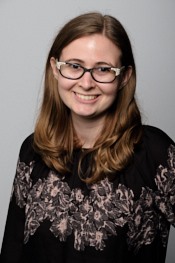Program Information
Verification of Photoacoustic Computed Tomography Perfusion Imaging Using DCE-CT
A Roth*, M Krutulis , A Verleker , K Stantz , Purdue University, West Lafayette, IN
Presentations
TU-A-9A-10 Tuesday 7:30AM - 9:30AM Room: 9APurpose: We propose to verify quantifiable perfusion information generated by a Photoacoustic Computed Tomography (PCT) scanner using Dynamic Contrast-Enhanced CT (DCE-CT), and to investigate physics-based models of acoustic properties of tissue and photon transport to improve quantification. These corrections first necessitate a skin identifying algorithms to reduce speed-of-sound blurring and empirical photon correction methods.
Methods: Xenograft mice (n=5) of breast cancer was imaged using DCE-CT which was followed by DCE-PCT. To obtain CT perfusion data, each mouse was i.v. injected (0.2mL Isovue @0.5mL/min) and subsequent radio-opaque time curves fit to a 2-compartmental model on a voxel-wise basis. For DCE-PCT, different concentrations of ICG (250, 125, and 62.5 micro-Molar) were injected at the same rate, but also acquired at different sampling rates (3, 6, and 12 seconds). The time intensity curves from PCT were fit to a 1-compartmental model on a voxel by voxel basis. The images were coregistered (Oncentra) based on the structural similarities of the tumor vasculature after which we compared both the contrast-enhanced dynamics and the vascular physiology.
Results: Moderate to high doses of ICG impact the washin phase of the PCT contrast due to photon losses as a function of depth. A semi-automatic algorithm has been developed to identify the skin margin, and subsequent MC and empirical models of photon transport and variations in speed-of-sound are being evaluated.
Conclusion: From our results we find that there is a need to apply photon and speed-of-sound corrections to our PCT data to improve the quantifiable image data at depth in the tumor for PCT. The dose and injection rate may help in reducing large systematic effects.
Funding Support, Disclosures, and Conflict of Interest: Our project is partially funded by a NIH SBIR grant.
Contact Email:


